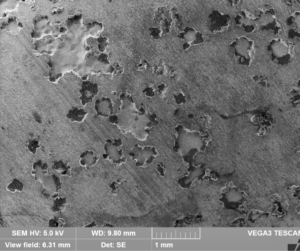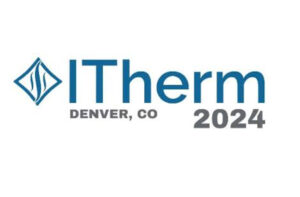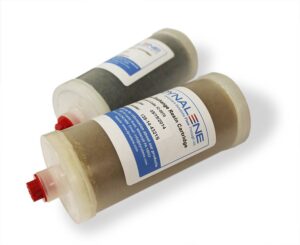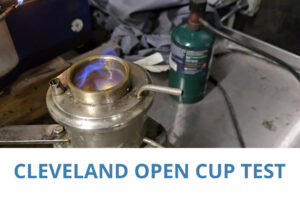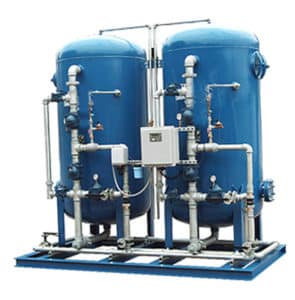Dynalene
“What is the difference between propylene glycol (PG) and ethylene glycol (EG)?”
The main difference between the two glycols is that ethylene glycol (EG) is toxic while propylene glycol (PG) is non-toxic and can be purchased in a food grade version in addition to the technical/industrial grade. Another difference is that PG has higher viscosity than EG, which means PG could be less efficient than EG, especially at lower temperatures. PG is also more expensive than EG. PG is mainly used in Heating, Ventilation and Air Conditioning (HVAC) as well as food and pharmaceutical process cooling applications, whereas EG is predominantly used in automotive antifreeze/coolant formulations.
“How do heat transfer fluids affect aluminum?”
Aluminum is a great material to use in a heat transfer fluid system; however, typical corrosion inhibitors may not be good enough to protect the product. The pH of typical glycol-based heat transfer fluids is too high (> 9.0). Aluminum behaves well at a pH of 4.5 to 8.5. You can either adjust the pH of your fluid or add an aluminum corrosion inhibitor.
“Should I use the glycol straight or mix it with water?”
In most cases you should mix glycol with water. The goal should be to minimize the amount of glycol in the fluid mixture, while maintaining the needed freeze protection and corrosion inhibitor content. For example, if the freeze protection needed is -20°F then the minimum amount of propylene glycol needed is 46% by volume (47% by wt.). You can consult the glycol technical data sheets provided by the manufacturer to determine the percentage of glycol for the freeze protection needed.
“What are inhibitors and do I need them?” 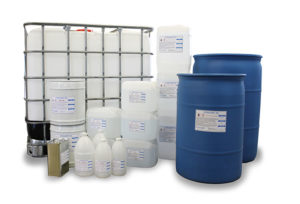
Inhibitors or corrosion inhibitors have multiple functions in a water-based fluid. The main purpose of the inhibitor is to stop the metallic parts in a system from corroding. The second function of the inhibitor is to extend the life of the coolant itself. Glycol based coolants will degrade over time to acids. The presence of the inhibitors helps to
slow that degradation. Even if you have a stainless steel or non-metallic system you should consider using an inhibitor to protect the fluid. The only time Dynalene recommends not using an inhibitor is when there is galvanized (zinc coated) piping or parts in the coolant loop and when zinc coating is in contact with the fluid.
“How long will the glycol last in my system?”
This is a difficult question to answer because of the range of different variables that determine the longevity of the coolant. Temperature range, materials of construction, and fluid maintenance are all factors. Dynalene’s customers have systems where the glycol has lasted for more than 15 years. In certain very high temp systems (> 300°F), the glycol may last only a few years. The pH and the inhibitor concentration or reserve alkalinity must be maintained for a glycol to have a prolonged life.
“How can I tell if I need to adjust or change the glycol in my system?”
The easiest way to determine if something needs to be done with the glycol is to check the pH of the fluid. Normally the pH should be above 8.0, but if it drops below that you should have it tested professionally and adjusted, or change the fluid completely. In addition, if you observe severe corrosion (particulates in the fluid) in the interior of the cooling loop then a thorough testing of the fluid is necessary. The glycol manufacturer can recommend any adjustment or change-out of the fluid.
“Can I tell what type of glycol I have by the color?”
No. When glycols are manufactured they are clear and mostly colorless. The color in a glycol is added for leak detection. Color does not indicate the type of product in the system. The other issue with color is that over time the glycol will change color to darker brown, so the original color may not be apparent. “Do I need to filter my heat transfer fluid?” It is always good to have a filtration system (in-line or slip-stream) in the heat transfer fluid circulating loop. Fluids over time accumulate debris, corrosion products, and precipitates due to contamination, system corrosion or fluid degradation. If the fluid is not filtered then it may lead to system clogging, reduction in heat transfer rate, and excessive corrosion.
“Can I use a glycol at 300 or 350°F?”
You can use properly inhibited glycols at high temperatures up to 350°F. Regular inhibited glycols are generally rated up to 250°F. At temperatures higher than 250°F, glycols degrade severely forming acid molecules. However, with proper buffering and corrosion inhibitors a glycol can be used at high temperatures. “What is the “Burst Point“ of a glycol heat transfer fluid? How do I know that my system will not burst in the winter?” 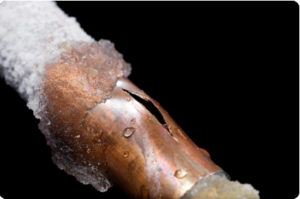 When using glycol/water mixtures it is important to consider how cold the fluid will get, but it is also equally important to consider how the fluid will be used at that temperature. Will the fluid be stagnant or will it be circulated? Is the glycol for winterization? These questions ultimately affect the mixture ratio of the glycol. For example if a coolant loop or system is being winterized and temperatures will fall down to -10°F at the lowest, a mixture of 30% propylene glycol to 70% water will be enough to protect the system. 30% propylene glycol has a freeze point of 8°F but the burst point is -18°F. This system will be protected but the coolant will be slushy. By definition, freeze point is the temperature where ice crystals begin to form. The fluid will become slushy but will not expand. The burst point of a fluid is the temperature where the fluid will freeze solid, expand, and break pipes or damage other parts of the equipment.
When using glycol/water mixtures it is important to consider how cold the fluid will get, but it is also equally important to consider how the fluid will be used at that temperature. Will the fluid be stagnant or will it be circulated? Is the glycol for winterization? These questions ultimately affect the mixture ratio of the glycol. For example if a coolant loop or system is being winterized and temperatures will fall down to -10°F at the lowest, a mixture of 30% propylene glycol to 70% water will be enough to protect the system. 30% propylene glycol has a freeze point of 8°F but the burst point is -18°F. This system will be protected but the coolant will be slushy. By definition, freeze point is the temperature where ice crystals begin to form. The fluid will become slushy but will not expand. The burst point of a fluid is the temperature where the fluid will freeze solid, expand, and break pipes or damage other parts of the equipment.


